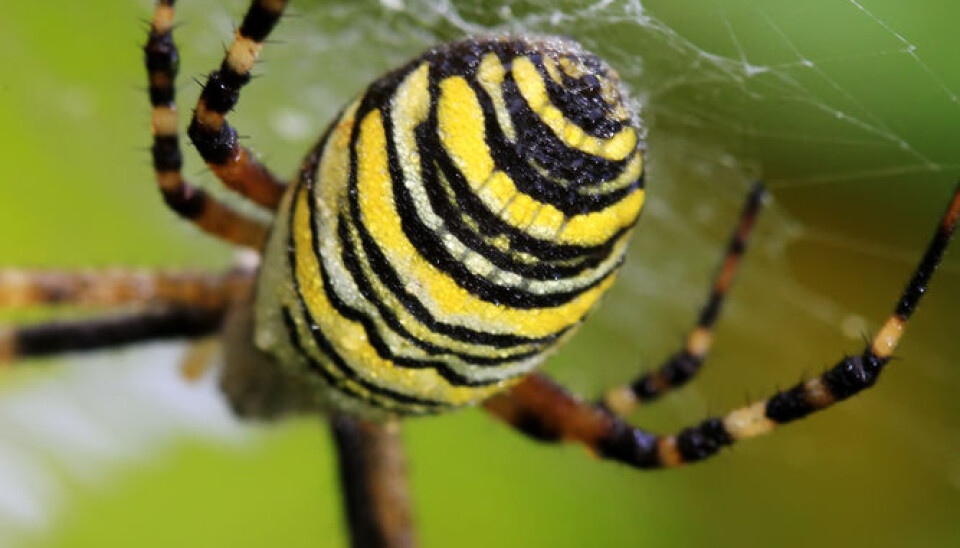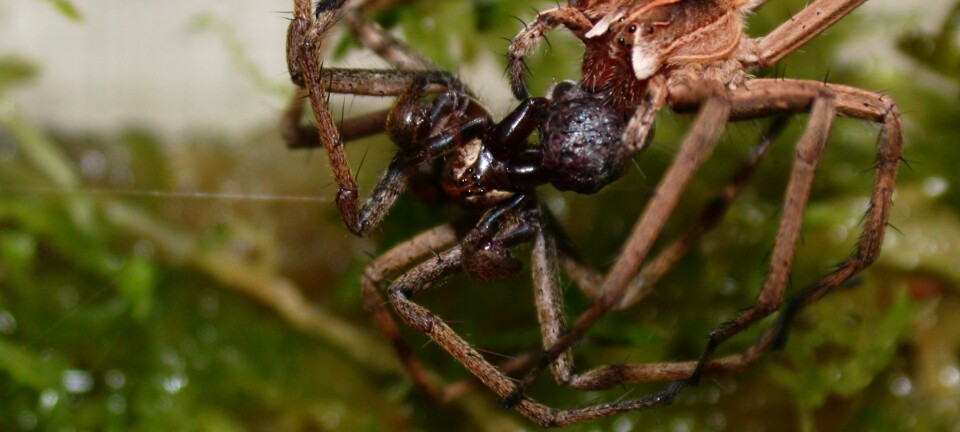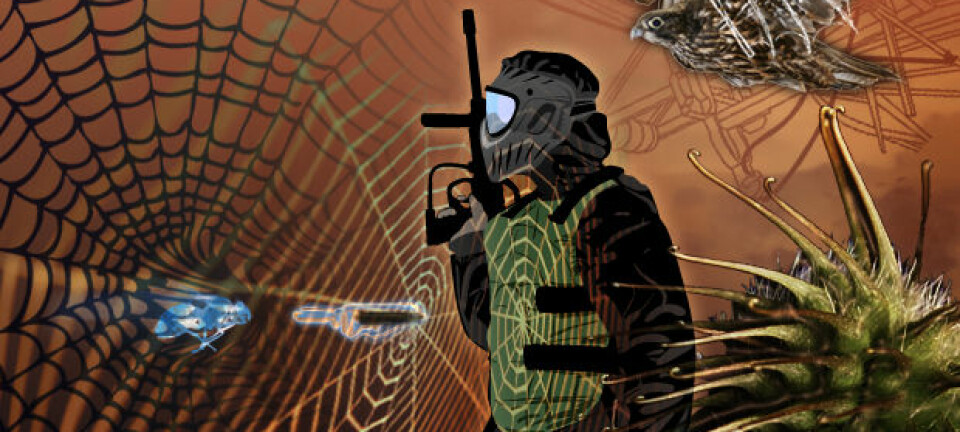
How spiders weave their webs
Scientists have at last figured out what goes on when spiders spin their webs.
A spider’s ability to spin cobwebs has baffled and amazed chemists and material technologists around the world for a long time. Exactly how the silk strand comes into being inside the spider is a mystery.
Now an international team of scientists has pushed forward our understanding of how this process occurs. The Danish researcher involved in the study is delighted to have helped solve this complex mystery:
”The spider produces a product that is stronger than steel by means of a very thick liquid, which it stores in its body. It’s actually quite amazing and it proves how fascinating Nature is,” says co-author Professor Daniel Otzen, of iNANO and the Department of Molecular Biology and Genetics, Aarhus University, Denmark.
Silk gel turns to strands in less than a second
Scientists have known for a long time that the process starts in the spider’s so-called silk gland, where it stores and maintains a gel-like unspun silk liquid, which mainly consists of proteins.
When the spider wants to weave a web, it transports the liquid through a channel that flows into its abdomen, ending in a spigot from which the silk fibre emerges. This process takes less than a second.
The researchers looked at how the spider manages to convert the liquid into a silk strand, and the answer appears to lie in the acidity levels of the silk liquid.
The strand is more acidic than the liquid
It was discovered in 1998 a the silk strand is more acidic than the liquid silk inside the spider’s glands. In other words, a cobweb has a lower pH value than the liquid it is made of. However, it was not clear what consequences this lowered pH had at the molecular level.
When a mass becomes acidic, it means that it contains more protons. Otzen explains that these protons are essential for the process of converting the liquid silk into silk strands. The protons help the proteins in the mass to bind with each other, and the researchers have now come closer to understanding exactly how this process occurs:
”When some of the proteins in the mass pick up the protons, the proteins become positively charged. This enables them to bind with the other proteins. Each protein thus finds a ‘dancing partner’ to bind with. This is how the liquid matter becomes solid, and how the gel-like mass turns into the strands of a spider’s web,” he says.
One step closer to artificial spider’s webs
As ScienceNordic reported in another article, scientists across the world are seeking to exploit the properties of spiders’ web strands in an effort to produce artificial spider’s webs. Since the material is strong and elastic at the same time, it can be used to make a wide variety of products, including rope, wind turbine blades and bulletproof vests. Otzen believes that the new findings will bring scientists closer to producing this material synthetically:
“The more we learn about how spiders actually produce their silk strands, the closer we’ll get to mimicking it in practice. With this study we have definitely advanced our understanding the process.”
----------------
Read the Danish version of this article at videnskab.dk
Translated by: Dann Vinther








